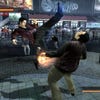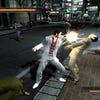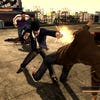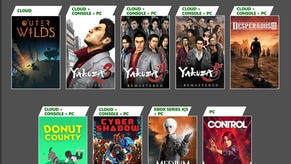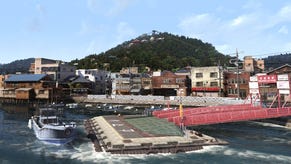Yakuza 4
Sleeping with the sushi.
For the video game sightseer drawn to urban breadth and spectacle, nothing yet beats Grand Theft Auto's Liberty City. It's a sprawling virtual capital with distinct districts, diverse architectural influences and landmarks that imprint the memory.
But if you want authenticity and depth, Yakuza 4's grimy Kamurocho is the go-to destination. The geography may be more limited than in Rockstar's city, but its ambition is no shorter. And it's in the details that Kamurocho – a semi-fictional location based closely on Kabukicho, Japan's notorious red light district – beguiles.
In the daytime, the higgledy-piggledy mess of a Tokyo district is in plain view. Tangles of overhead electrical wires bunch like bird nests in a forest of neon and concrete. Buildings hunch shoulder-to-shoulder next to one another, one tall, another squat, their almost-embrace forming tight alleyways all around - narrow tributaries darting off from the main street inviting snug exploration.
Red neon Ka-Ra-O-Ke signs try to out-glare the dreamy eyes of mousse-haired idols on billboards opposite, while every shopfront screams for attention with blasts of bold lettering, and the irrepressible shouts of a staff member, loudspeaker pressed to lips, boasting of its wares.
At night the distant clanging of a construction site gives way to the Babylonian jangling of a city seeking thrills. Young men in medium-priced suits hover at the shoulders of pretty girls, inviting them to sign up to become hostesses at nearby establishments, while professionals loiter with impatient tuts and foot taps awaiting their tardy dates.
The furious rattle of ball bearings can be heard muffled behind the sliding doors of a pachinko parlour, while schoolgirls squeal as their teen suitors try to win them a cuddly toy at the Club SEGA arcade.
Kamurocho has a weighty sense of verisimilitude, not only in its architecture – which can be viewed on high from the rooftops, or at the roots level from underground malls and carparks – but also in its people. Beggars scratch sleepily in shop doorways, while salarymen march purposefully towards their next appointment.
For anyone familiar with contemporary Tokyo, the sights and sounds are pitch-perfect, the main difference being that, dressed as a virtual native Japanese, you now have access to many of the establishments that, as a real-life gaijin, are usually off limits.
We're still some way from being allowed to enter every building in the city, but around 35 per cent of Kamurocho's establishments have doors that open and bellies that can be explored, a fact that moves this video game city away from the dolls house façade of Liberty City and contributes to a new sense of depth.
Who might be behind this door? What adventure lurks at the end of that alleyway? Persuasive questions. And, for once, they regularly come with satisfactory answers.
Because in the main, having set the stage with such care and attention, Yakuza 4 manages to deliver an absorbing story upon it. Four absorbing stories, in fact, as producer Toshihiro Nagoshi chooses to more fully embrace the soap opera structure the series has always enjoyed, shining the spotlight onto an ensemble cast into whose shoes you are invited to step one by one.
The first of these protagonists, with whom you share the first five hours of the game, is arguably the most interesting. A 32-year-old former homeless man, Shun Akiyama runs Sky Finance, loaning money to those who cannot find credit elsewhere. He charges no interest on the loan, but instead requires his clients to engage in volunteer working to demonstrate their trustworthiness prior to receiving the cash.
Akiyama, working so closely with Kamurocho's most needy denizens, also enjoys close contact with the Yakuza, so his philanthropy is tempered by his mean right hook, a tension between moral uprightness and physical depravity that runs through the very centre of the game.
Later you work as Masayoshi Tanimura, a corrupt policeman, Taiga Saejima, a former Yakuza knucklehead on death row, and series stalwart Kazuma Kiryu, the moralising owner of an orphanage. Their stories are separate but intertwined, drawing together for the final portion of the game. As such, the four characters offer variety, but at the expense of complete investment from the player asked to switch between them.

